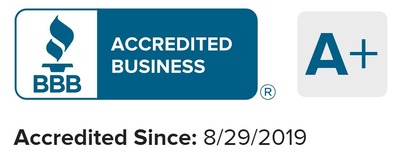So, are you also the one who wants to evict your Section 8 tenant from your Section 8 housing? If you are, you need to know the eviction process for Section 8 and the issues you can face while evicting the tenant. Evicting a tenant using Section 8 can be a complicated process with unique rules and regulations landlords must know.
Did you know? According to the NLIHC, nearly 6% of evictions are filed annually through public housing agencies nationwide.
In this article, we’ll break down the Section 8 eviction process step-by-step to help you stay compliant with protecting your rights as a property owner.
Why is the Section 8 Housing Eviction Process Different?
Section 8, also known as the Housing Choice Voucher (HCV) program, is a crucial initiative that provides rental assistance to low-income families, the elderly, and the disabled, enabling them to afford private market housing. As a participating landlord or Section 8 landlord, you play a vital role in this program, agreeing to rent your properties to tenants with Section 8 vouchers. In return, the local housing authority pays a subsidy directly to you, covering a portion of the monthly rent.
As the subsidised housing provider, the housing authority is deeply invested in the tenant’s occupancy and must approve any eviction efforts by the landlord. This is why evicting a Section 8 tenant requires additional legal process steps compared to a standard eviction.
- The housing authority must be given proper notice of the eviction and an opportunity to discuss the issues with you and the tenant before proceeding.
- HUD regulations govern the lease termination process, which landlords must comply with to avoid legal issues later on.
- Tenants are provided certain protections, such as the right to request an informal hearing with the housing authority to dispute the eviction.
When Can You Begin the Section 8 Eviction Process?
As with any tenants, you have the right to evict Section 8 renters for lease violations like nonpayment of rent or damage to the unit. 24 states and Washington D.C. have laws specifically protecting landlords’ ability to evict tenants for these types of breaches. However, you must follow proper legal procedures.
Evicting a Section 8 tenant requires legitimate reasons, such as:
- Nonpayment of rent
- Lease Violations
- Criminal Activity
- Fraud
- Abandonment of the Unit
Nonpayment of Rent
If a Section 8 tenant fails to pay their portion of the rent by the deadline listed in your lease agreement, you can start eviction proceedings. This is one of the most common reasons for Section 8 terminations nationwide, accounting for over 50% of cases. Thorough documentation of each missed or partial payment is crucial.
Lease Violations
Repeated violations of material lease terms beyond a reasonable number of chances, such as damage to the unit, unauthorized occupants, unapproved pets, or criminal activity, justify eviction. Again, keep detailed records of violations, warnings given, and the tenant’s response or lack thereof.
Criminal Activity
If the tenant, any member of their household, or guest engages in criminal activity that threatens the health or safety of others on or near the premises, it allows termination of the lease and eviction process. Provide police reports or other evidence to the PHA and court.
Fraud
Eviction is permitted if a tenant misrepresented or omitted facts that would have resulted in denial of their housing assistance. For example, unreported income, unlisted household members, or prior drug convictions. Contact the PHA if fraud is suspected.
Abandonment of the Unit
If the tenant vacates the unit before the notice period expires, change the locks for security. But if there is reasonable doubt they intend to return, seek an official court order granting possession to avoid occupancy claims.
How to Evict Section 8 Tenant: Step-by-Step Guide

Most states mandate specific procedures for lawfully evicting tenants, whether or not they receive housing assistance. There are also additional HUD regulations that must be followed when evicting a Section 8 renter. Here are the basic steps:
- Step 1: Give Proper Written Notice of Lease Violation
- Step 2: Give Notice to the Public Housing Authority
- Step 3: Wait for the Tenant’s Response
- Step 4: File the Unlawful Detainer Lawsuit
- Step 5: Attend the Eviction Hearing
- Step 6: Get the Writ of Possession
Step 1: Give Proper Written Notice of Lease Violation
According to HUD regulations, the landlord must first provide the tenant with written notice of the specific lease violation and advise what corrective action is required to avoid eviction.
For payment issues, the notice should state the payment amount and due date, along with being delivered properly. If a repair is requested, reasonably outline the timeline expected for completion. Keep a record of all correspondence in your tenant file as evidence should you proceed to court.
The notice must also inform tenants they have the right to request an informal settlement conference with the PHA to review the issues before a formal eviction is filed. This is intended to potentially resolve issues without court involvement.
Always use factual language that objectively states the violation without personal accusations. Clearly outline any deadlines for compliance and that eviction proceedings may start if no action is taken. Retain a signed delivery receipt or certified mail receipt as proof of service.
Step 2: Give Notice to the Public Housing Authority
Once eviction notice or notice to quit is served to the tenant, HUD also requires written notification to be provided to the local PHA within a reasonable timeframe. Send a copy of the same violation notice along with:
- Tenant’s name, address, and Section 8 voucher number
- Description of the lease violation issue
- Any prior attempts at communication or resolution
- Contact details if additional information is needed
The PHA will note the file and determine if a formal grievance hearing or settlement conference is requested. They may also do an inspection before eviction if substantial repair issues exist. This transparency supports tenants’ rights while still enabling lawful evictions.
Step 3: Wait for the Tenant’s Response
After written notices are served, allow reasonable time for tenant response based on the situation. For unpaid rent, this is generally 2-3 weeks. Other violations may require less time, depending on the deadline provided and the severity of the issue.
It’s important not to rush the eviction process at this point as you want to demonstrate good faith and effort to work with tenants and the PHA. Document all interactions during this waiting period, including any resolution attempts or excuses given for non-compliance.
If the issue remains unresolved or a settlement conference does not result in an agreed resolution, you have grounds to move forward with filing the formal eviction lawsuit in court. Remember to provide ample notification throughout.
Step 4: File the Unlawful Detainer Lawsuit
The last step is to file an unlawful detainer lawsuit, also known as an eviction lawsuit, in your local court that has jurisdiction over landlord-tenant matters. Be sure to:
- Check all notice and timeline requirements under state law are met
- Use the standard eviction complaint forms for your area
- Name the tenant(s) being evicted and describe the lease violation issue
- Request judgment for possession of the premises and any back rent owed
- Provide a copy of the Section 8 termination notice, lease, notices of violation, and confirmation of service
- File all documents and pay appropriate court fees
This officially launches the legal eviction process. The court will schedule a hearing date for the tenant to respond, which you must attend regardless of if they show up or not.
Step 5: Attend the Eviction Hearing
As the landlord, you’ll need to present your case to the judge at the scheduled eviction hearing. Come prepared with:
- Organized documentation of the lease violation issue timeline
- Records of all written notices and proof of proper service
- Photos, videos, or other evidence to support the violation claim
- Ledgers showing amounts owed for nonpayment of rent
- Knowledge of Section 8 OKC regulations in case the tenant brings them up
Be respectful and give clear, truthful answers to any questions from the judge. If your evidence proves the tenant breached the lease agreement, the judge will likely grant a judgment for possession in your favor, barring any unusual circumstances.
Step 6: Get the Writ of Possession
Once you have the judgment granting you possession, request a writ of possession from the court, which allows law enforcement to remove the tenant if they refuse to leave voluntarily. The sheriff’s department or constable will post this notice at the rental property.
From there, you’ll need to work with those agencies to schedule a lockout date, usually 5-10 business days later. Advise the tenant and PHA in writing of the scheduled lockout and that they must vacate by that date, or the sheriff will remove them. Clean-outs are typically not permitted after lockout notice has been served.
Carefully follow all lockout procedures provided by law enforcement. You cannot perform forcible entry or self-help evictions on your own. Wait for officers to safely remove any remaining occupants and possessions before regaining entry.
Also Read: Oklahoma Eviction Laws and Process
Additional Steps After Eviction
There are still a few other steps to complete the Section 8 eviction process after the physical removal of the tenant:
- Notify the PHA in writing that the tenant has vacated so rental assistance can be terminated. They’ll conduct an inspection.
- Change all locks immediately for the security of the vacant unit before renting it out again.
- Submit the required paperwork if pursuing a monetary judgment against the tenant for back rent, damages, or other fees.
- Blacklist the evicted tenant if they owe funds, damaged property, or caused other lease violations to prevent future renting from you.
- Properly dispose of any abandoned possessions left behind in accordance with state landlord-tenant law.
- Carefully screen replacement tenants to prevent similar issues from recurring down the road. Consider non-Section 8 renters if problems persist.
Recommended: Steps Landlords Take After Evicting a Tenant
Common Issues Landlords Face in the Section 8 Eviction Process

While following the steps outlined above will maximize your chance of a successful eviction, there are still some potential roadblocks landlords commonly encounter:
- Housing Authority Contesting: The local PHA can argue your eviction reason doesn’t meet “good cause” standards and prolong the legal process. Bring thorough records of issues.
- Tenant Appeals: Section 8 tenants facing eviction have appeal rights that can mean multiple court hearings and delays before possession is granted.
- Payment/Compliance During Appeals: Tenants may pay rent or temporarily remedy issues to stall evictions while contesting them, but underlying lease violations often remain.
- Lack of Legal Counsel: Without an attorney, landlords risk making technical mistakes in legal filings or process that get evictions thrown out.
- Difficulty Removing Belongings: Tenants who refuse to leave often won’t allow belongings removed either, leaving units uninhabitable until sheriff forced entry.
- Damage to Property: Units commonly see increased damage and neglect during prolonged evictions, including repairs before re-renting.
Being well-versed in the intricacies of Section 8 evictions and proactively addressing these potential delays can help streamline as smooth a process as possible when challenging cases arise. With experience comes greater confidence navigating the obstacles.
How to Prevent Section 8 Evictions in the Future?
Once an unwanted tenant is finally evicted, it’s important to take steps to reduce the chances of similar problems in the future:
- Screen applicants thoroughly, verifying income, rental history, and credit.
- Clearly outline all rules and policies upfront in the lease agreement.
- Conduct regular property inspections quarterly using the same inspection forms for documentation if issues arise.
- Communicate professionally with tenants in writing to establish a record of any complaints.
- Consider increasing security deposit amounts to better protect against damages.
- Learn more about the Section 8 program requirements yourself to avoid accidental noncompliance.
By being selective with new tenants, setting clear expectations upfront, and staying diligent about inspections and documentation, landlords can greatly improve their chances of finding responsible Section 8 renters and avoid costly, drawn-out legal battles in the future.
With a proper understanding of both your rights and Section 8 Housing Landlord Responsibilities, along with familiarity with your state’s eviction process and documentation requirements, you’ll be better equipped to handle problem tenants lawfully and regain control of your rental property quickly and efficiently.
Conclusion:
I hope you have some ideas regarding the Section 8 eviction process through this article. It would be best to consider when and how to go for an eviction of a Section 8 tenant. Otherwise, you can face some issues with the eviction of Section 8 tenants. Thus, to prevent Section 8 Evictions, screen applicants thoroughly, verify income, check rental history, conduct regular property inspections, etc. If you have any queries regarding Section 8 eviction, contact OKC Home Realty Services.
FAQs Section 8 Eviction Process
How long must I wait after nonpayment before filing an eviction?
Most state laws require at least 3 days past the rent due date before beginning eviction proceedings. Check your local ordinance but do not delay, as this period is the minimum - not a grace period where further nonpayment is acceptable.
Can tenants break a lease if their Section 8 is terminated?
No, termination of assistance alone does not void tenants' lease obligations. They are still responsible for the full rental amount unless you agree to a mutual termination. Proper notice would need to be provided according to the lease terms and state law.
Do Section 8 tenants have more rights than regular renters?
No, the Section 8 program does not provide additional eviction protections beyond state and federal landlord-tenant laws that apply to all renters equally. The grounds for eviction and legal process are the same regardless of a tenant's income or subsidy status.
Can I evict a Section 8 tenant for criminal activity?
Yes, you can evict a Section 8 tenant for drug-related criminal activity or other criminal behavior that threatens the health, safety, or right to peaceful enjoyment of the premises by other residents. However, you must follow the proper eviction procedures and provide evidence of the criminal activity.
Can the PHA stop the eviction process?
The PHA does not have the authority to stop an eviction if you have followed the proper procedures and have a valid reason for eviction. However, they may attempt to mediate the situation or assist the tenant.
Are there any special considerations for evicting tenants with disabilities under Section 8?
Yes, landlords must ensure compliance with fair housing laws and provide reasonable accommodations if needed during the eviction process.
What specific documentation do I need to maintain during the eviction process?
It's important to keep records of all written notices, tenant communications, payment history, and any evidence of lease violations to support your case in court.

Author
Scott Nachatilo is an investor, property manager and owner of OKC Home Realty Services – one of the best property management companies in Oklahoma City. His mission is to help landlords and real estate investors to manage their property in Oklahoma.
 (
(









